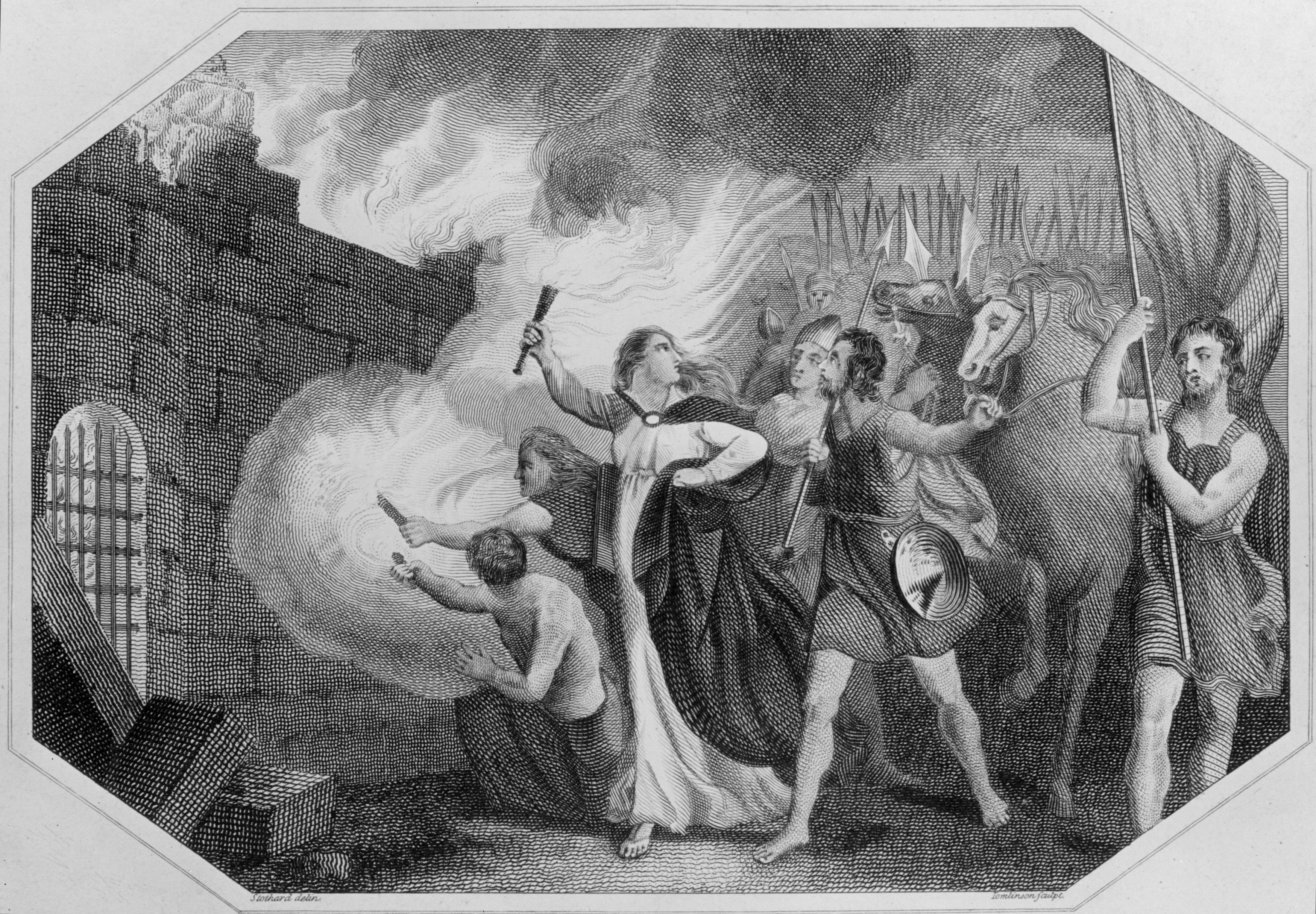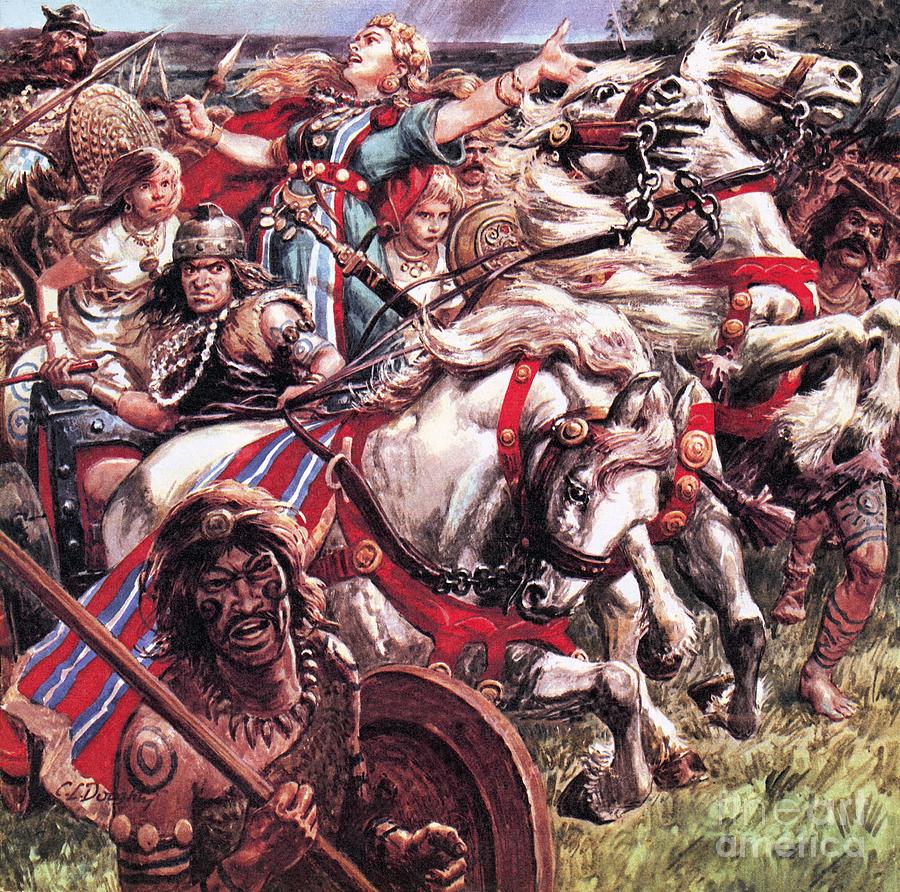Boudica (also written as Boadicea) was a Celtic queen who led a revolt against Roman rule in ancient Britain in A.D. 60 or 61. As all of the existing information about her comes from Roman scholars, particularly Tacitus and Cassius Dio, little is known about her early life; it’s believed she was born into an elite family in Camulodunum (now Colchester) around A.D. 30.

At the age of 18, Boudica married Prasutagas, king of the Iceni tribe of modern-day East Anglia. When the Romans conquered southern England in A.D. 43, most Celtic tribes were forced to submit, but the Romans let Prasutagas continue in power as a forced ally of the Empire. When he died without a male heir in A.D. 60, the Romans annexed his kingdom and confiscated his family’s land and property.
Boudica, Warrior Queen
As a further humiliation, they publicly flogged Boudica and raped her two daughters. Tacitus recorded Boudicca’s promise of vengeance after this last violation: “Nothing is safe from Roman pride and arrogance. They will deface the sacred and will deflower our virgins. Win the battle or perish, that is what I, a woman, will do.”
Like other ancient Celtic women, Boudica had trained as a warrior, including fighting techniques and the use of weapons. With the Roman provincial governor Gaius Suetonius Paulinus leading a military campaign in Wales, Boudica led a rebellion of the Iceni and members of other tribes resentful of Roman rule. After defeating the Roman Ninth Legion, the queen’s forces destroyed Camulodunum, then the captain of Roman Britain, and massacred its inhabitants. They went on to give similar treatment to London and Verulamium (modern St. Albans).

By that time, Suetonius had returned from Wales and marshaled his army to confront the rebels. In the clash that followed–the exact battle site is unknown, but possibilities range from London to Northamptonshire–the Romans managed to defeat the Britons despite inferior numbers, and Boudica and her daughters apparently killed themselves by taking poison in order to avoid capture.

In all, Tacitus claimed, Boudica’s forces had massacred some 70,000 Romans and pro-Roman Britons. Though her rebellion failed, and the Romans would continue to control Britain until A.D. 410, Boudica is celebrated today as a national heroine and an embodiment of the struggle for justice and independence.





